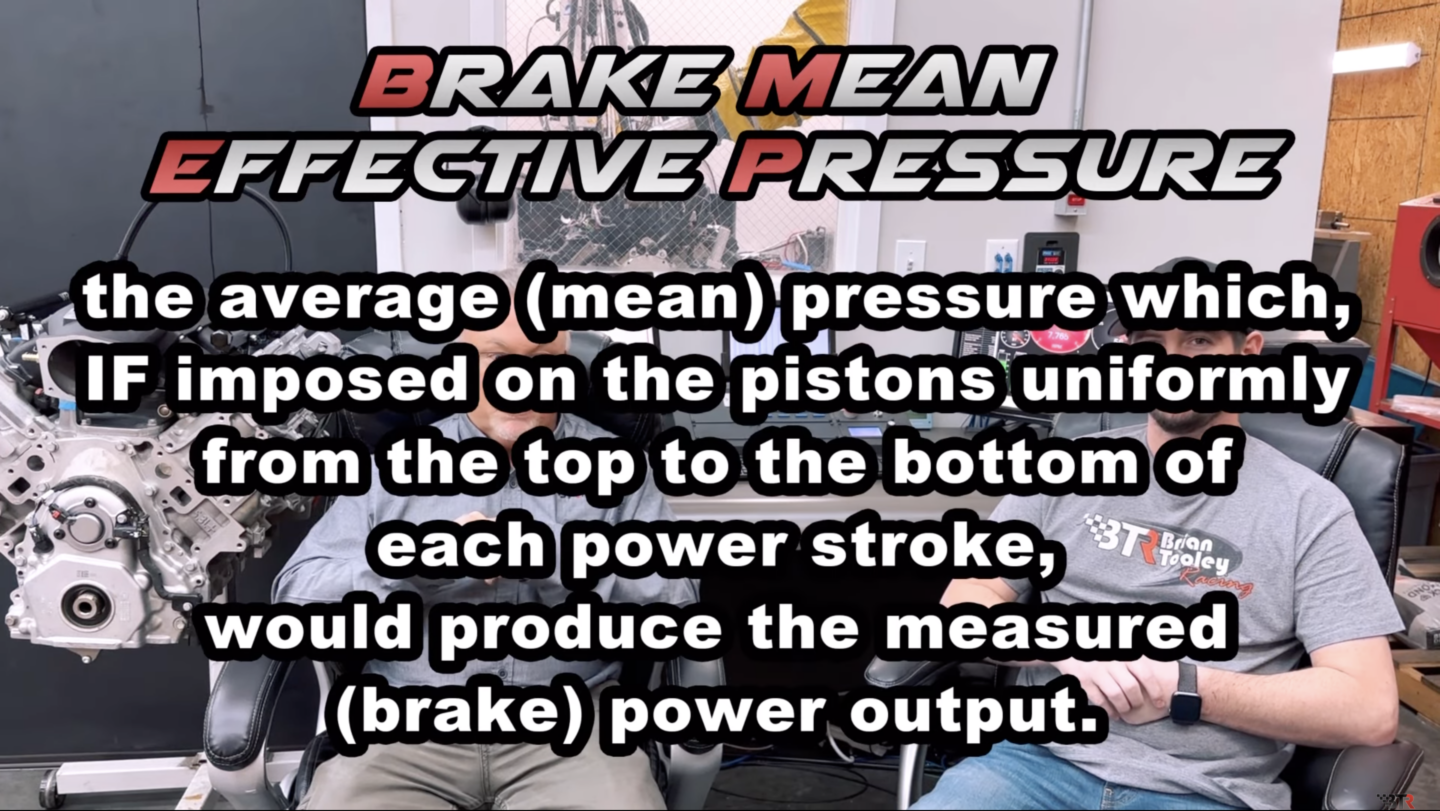Are you feeling a bit disenchanted by GM’s direct-injected Gen V LT engine? Does the proven performance of port injection better suit your horsepower hunger?
As a leader in all things GM performance-oriented, Brian Tooley Racing (BTR) has experimented extensively with both port and direct injection over the years. Tooley himself is a big fan of the Gen-V 6.2-liter GM engine in particular, as these motors have the ability to produce around two horsepower-per-cubic-inch on E85 with just a few modifications.
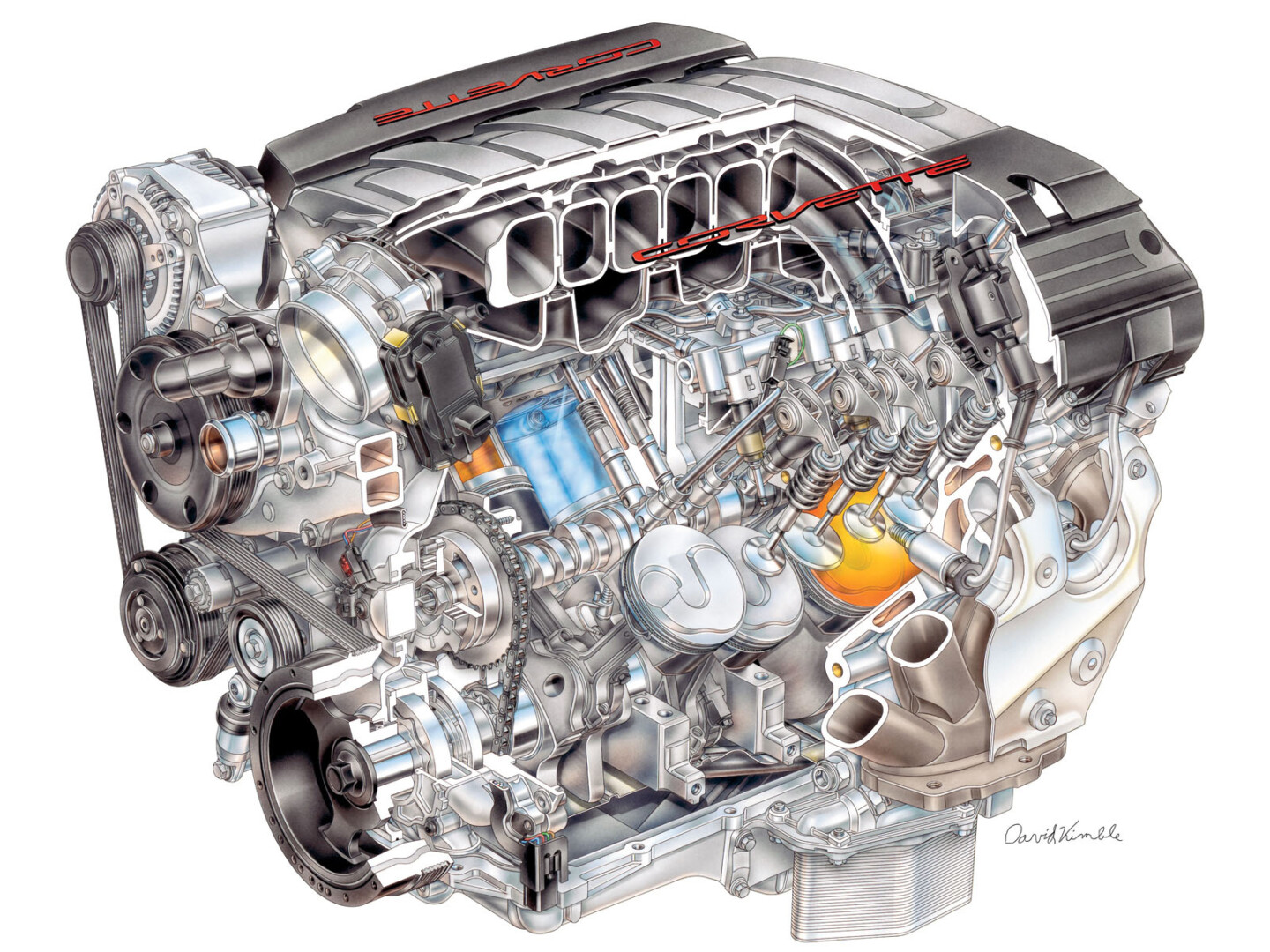
GM’s direct-injected Gen-V LT engine is a drastic design change from the previous Gen-IV LS engines. Placing the fuel injector directly in the cylinder heads is the biggest difference between the LT and LS families. It’s also a point of concern with many enthusiasts looking to modify their engines.
Let’s see… it takes only a slight amount of aftermarket assistance combined with 376 cubic inches of unrestrained American muscle for approximately double the factory power numbers. Let that sink in for a second…
As BTR’s recent YouTube comparison video clearly states, taking an honest, unbiased approach to making power remains paramount. This led the team at BTR to an intriguing question. Port injection or direct injection. Which produces more power?
Since dyno testing and complete transparency are two of the many things the BTR team is all about, they set out to see which fueling method produces more ponies. What they discovered was surprising and repeatable, as the results clearly prove one form of fueling is far more potent than the other.
Power Production Pointers
To shine a little light on port versus direct injection engines, Brian Tooley brought in EFI calibration specialist James Short of ShorTuning. A drag racing GM enthusiast with an impressive tuning portfolio and a penchant for conducting all manner of unorthodox experiments out of sheer curiosity.
As many other speed fanatics and internal combustion gurus will attest, the latent heat of evaporation often allows carbureted engines to make more power than their port-injected alternatives. A methodology that Brian Tooley explains in his video as one that translates to fuel being introduced into the system earlier than many modern fuel injection configurations.
Two Systems Enter, One System Wins
For their test mule, BTR used a slightly modified LT1 engine with a BTR Trinity intake manifold and some block-off port bungs for safely jumping back and forth between the port and direct injectors. This required removing each injector and plugging each hole to prevent burning the injector tips off during comparison pulls.
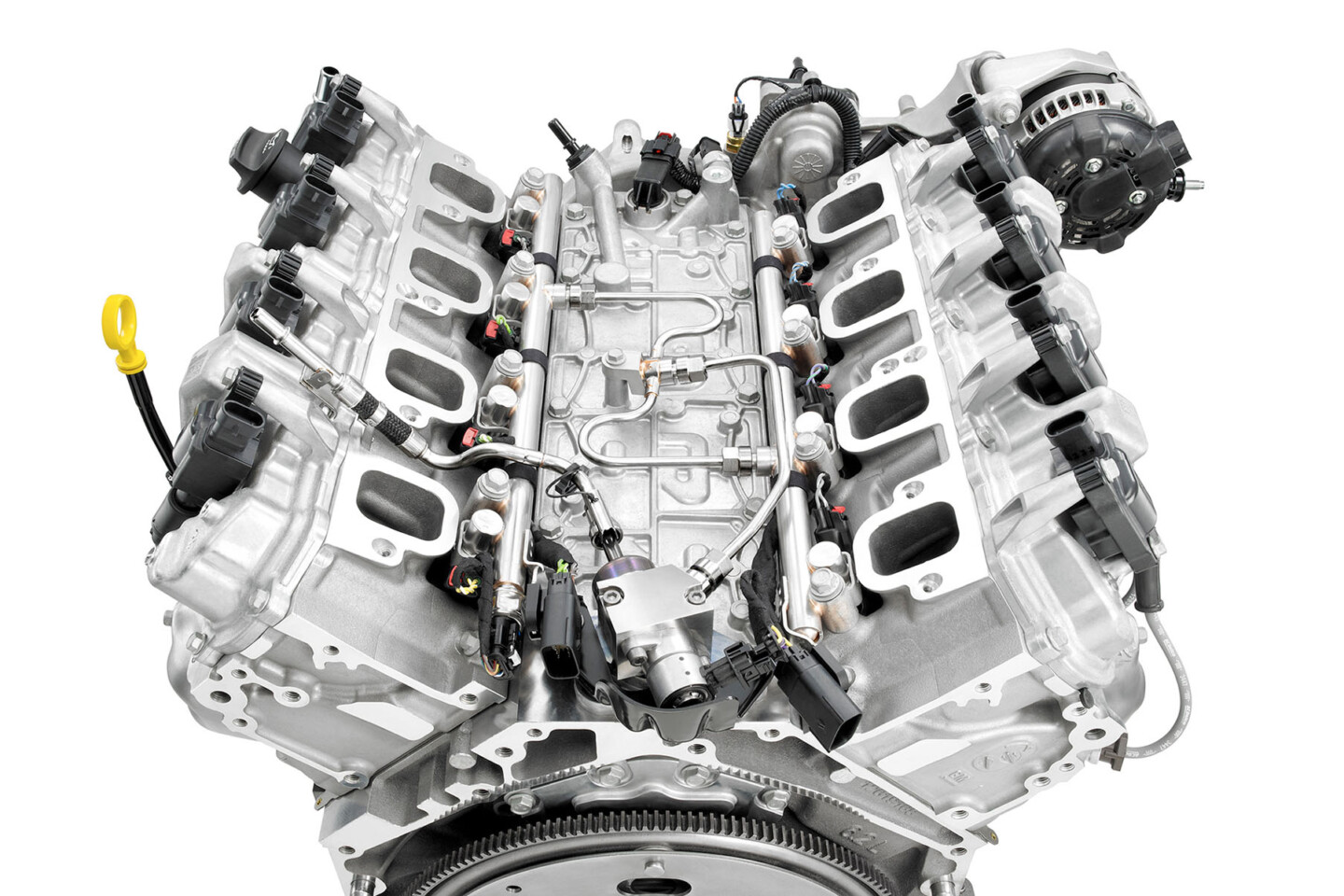
Swapping back and forth between direct and port injection required removing the direct injectors from the cylinder heads and adding block-off bungs, which, as you can see in the image above, requires pulling the intake manifold. Additionally, disconnecting the DI fuel pump was done to avoid any possible issues with sending fuel to the block-off plugs.
From a fueling standpoint, a stock LT4 pump and injectors were utilized during the test. However, the pump struggled somewhat to keep up and ran slightly leaner than the guys wanted when using the VP Racing Fuels M1 methanol. It still made power, but when asked in the video comments if they used the stock GM High-Pressure Fuel Pump (HPFP) for testing, James Short said: “We used an LT1 HPFP early on with ethanol but later switched both HPFP and Injectors to LT4. The 785-horsepower pulls on M1 were completely tapped out on the fuel system. Those pulls were also a bit lean due to that @0.91 lambda.”
With the direct injectors running at full steam, BTR’s dyno consistently showed approximately 740 horsepower from the LT1 engine. But something shocking happened when the guys switched over to port injection to see what difference between the two fuel delivery methods there might be.
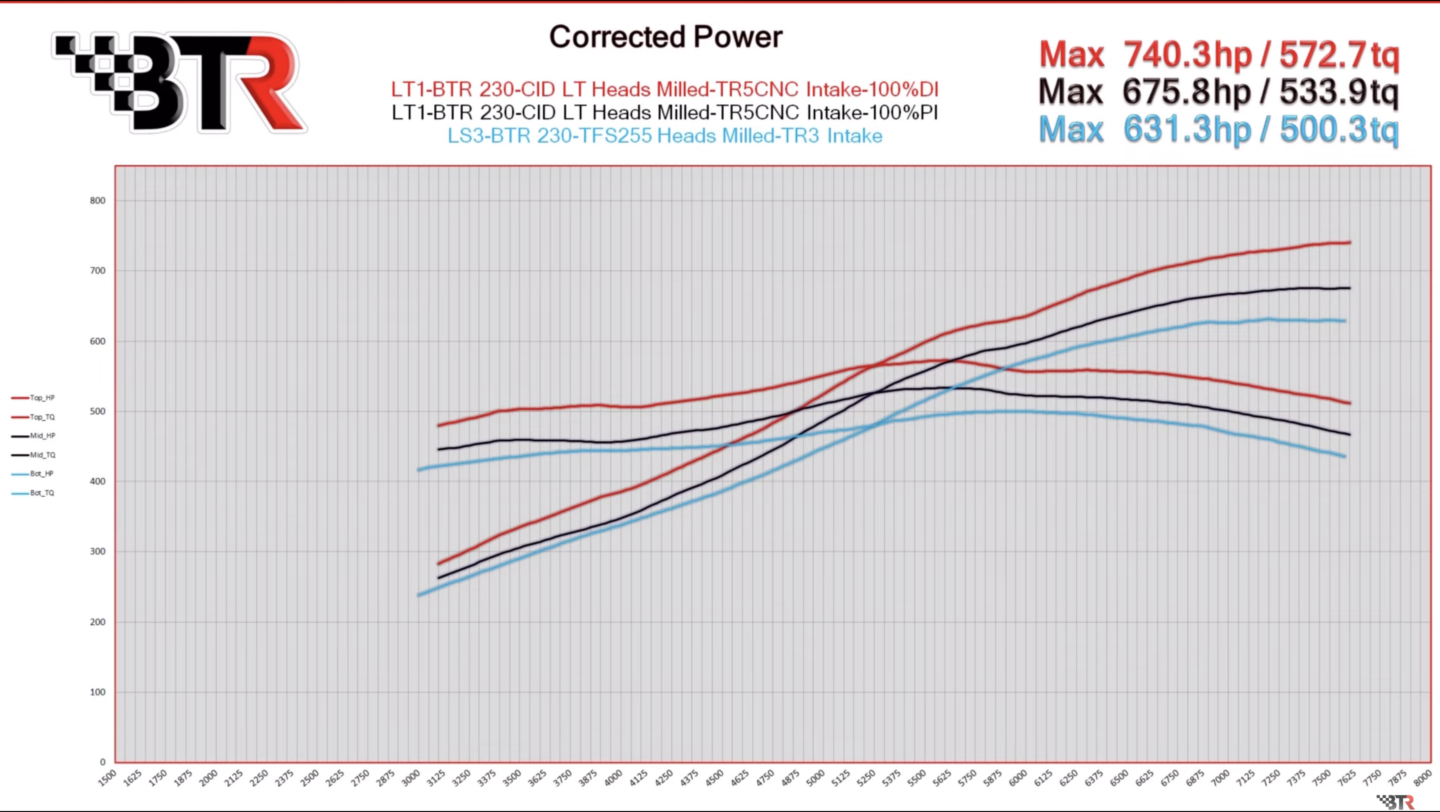
While a consistent drop of 65 horsepower was witnessed every time the BTR team converted the engine from direct injection to port injection, the airflow end of the equation provided the proverbial proof in the pudding. A seven-percent drop in airflow due to atomized fuel displacement may sound like small potatoes, but that’s a massive difference when an engine produces over 700 horsepower.
Port Injection Produced How Much Power?!
At first glance, it appeared that upon switching over to a port-injection configuration, the engine lost 65 horsepower. But of course, that couldn’t be correct… Could it? So some hasty retuning, followed by quite a bit of swapping the setup back and forth between port injection and direct injection, and some irrefutable results were revealed.
While direct injection produced a respectable 740 horsepower, the port injection system consistently hampered power outputs by 65 horsepower. Furthermore, airflow went from 451 grams per second to 420 grams per second on the port-injected setup. From a percentage standpoint, that translates to about a nine-percent difference in power and around a seven-percent variance in airflow.
Needless to say, Brian was stunned as he admitted in front of the camera that he had indeed been wrong about port injection producing more power. As the test results show, the airflow being displaced by the fuel entering the intake runner in the port-injected configuration does more harm than good in this comparison.
It’s best to start injection after TDC on the intake stroke but finish injection by BDC. This gives an “ideal” injection window of around 180-200 crank degrees. This also gives that evaporation time to happen and cool off the charge prior to compression and ignition. This is why tuning these [motors] is very specific and not just for the normal average tuner.— James Short, ShorTuning
Some More Injection Jargon For All Ye Combustion Nerds
Since the BTR guys are a bit on the mad scientist side, they decided to run half of the test engine with direct injection and the other half with port injection. This test was for their own amusement and to see if there was anything in the data they overlooked. The result was 707 horsepower and 436 grams per second of airflow. Figures that are precisely at the halfway point between the dueling fuel system extremes further emphasize their test results’ accuracy.
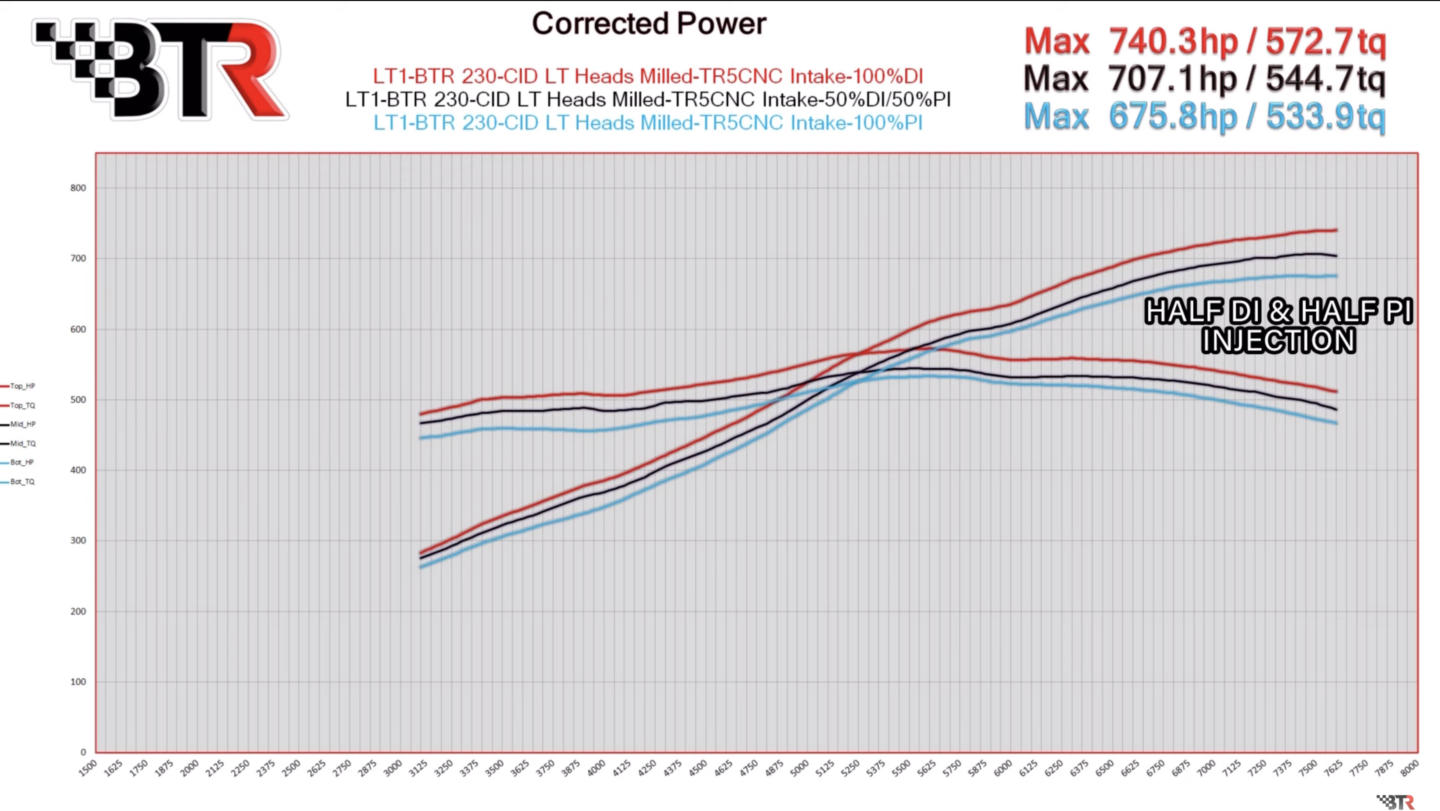
Brian and Jason went so far as to run their LT1 with half of it fueled via direct injection and the other half by port injection. The results only backed up their initial findings.
As for what this means from a Brake Mean Effective Pressure (BMEP) perspective, these results are pretty impressive. Tooley explains that by comparison, the stock block, direct-injected LT1 rivals that of NASCAR and Pro Stock engines when it comes to BMEP. Further proof that GM pulled out all the stops when designing the Gen V LT platform.
BTR took things even further by conducting this same experiment on its top-tier M1 methanol engine. The percentage difference was even more dramatic in this test, with a 12-percent drop in power occurring when the port-injection system was implemented. Tooley muses that this can likely be attributed to methanol requiring more fuel volume to be effective and thus displaces even more air when used with port injection.
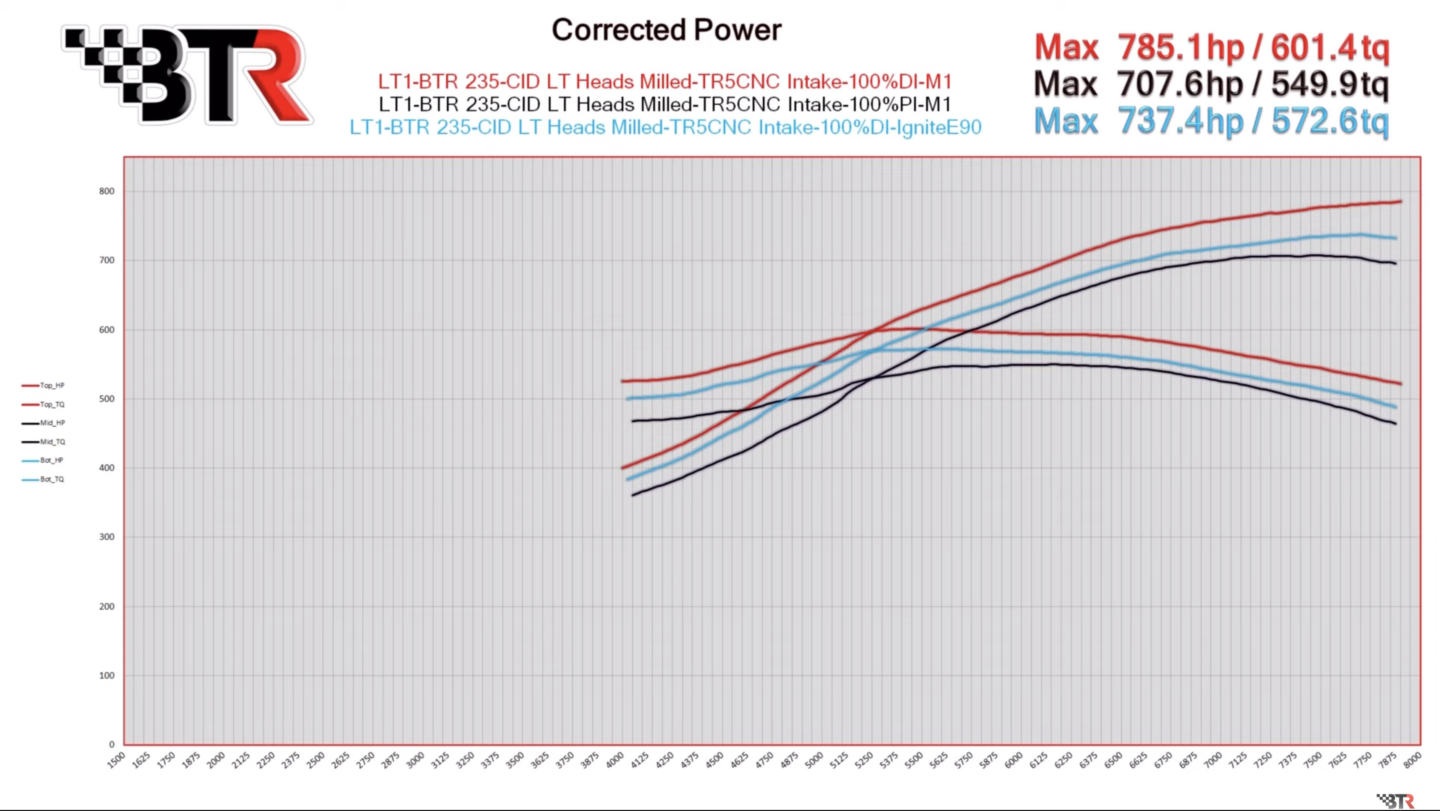
Running the LT1 on M1 methanol fuel increased the power output differential between direct and port injection.
Brian explained that direct-injected engines could be considered artificially supercharged because as much air as possible is fed into each cylinder before closing the intake valve and introducing the fuel. In this way, the fuel is not displacing the incoming airflow as with port injection.
Parting Pulls
Regardless of how you may feel about these unbiased test results, the shockingly sizable power figures that followed are impossible to ignore. Of course, the same can be said that GM built a beast when it engineered the LT engine.
If you want to compare an LS3 port injection engine, there’s really no comparison. The first dyno sheet with the 630-horsepower curve is our LS3 with TFS 255 heads using better 12-degree valve angles than stock 15-degree, max milling for compression, same intake, etc., and there’s still a 45 horsepower difference between the port injected LS3 and port injected LT1. That power difference is the canted valve cylinder heads and the higher compression that comes with LT1 engines.— Brian Tooley Racing
So, while it may be considered a bit ubiquitous by today’s standards, this stock short-block hydraulic roller cam design from 2014 can generate nearly 750 horsepower on pump gas from its OE direct-injection design. That’s with only a dash of aftermarket coaxing and minimal tuning on a stock ECU. Now those are some serious performance figures we can get behind.




